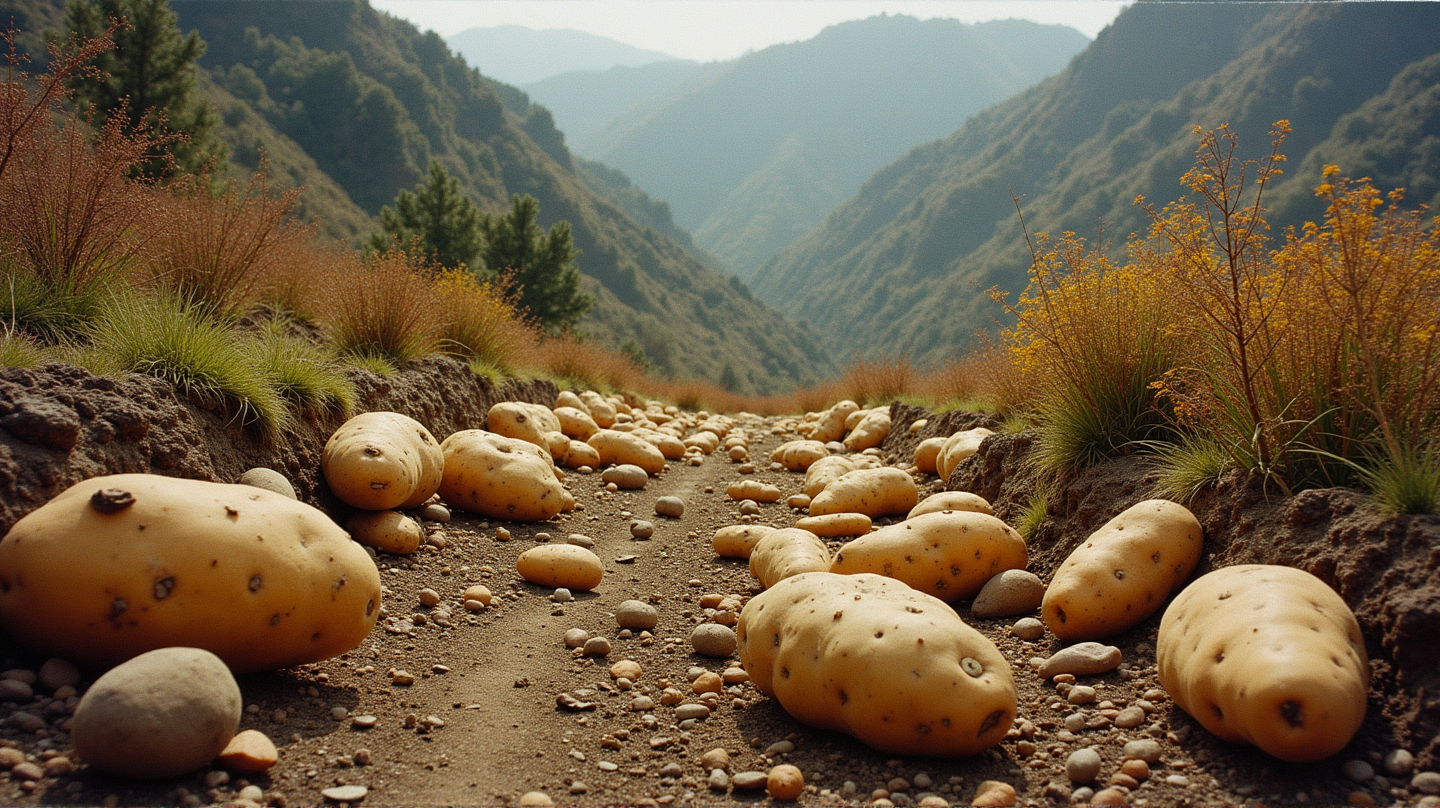The evolution of the humble potato is a tale that spans millions of years, beginning in the remote and rugged foothills of the Andes. What we know now is nothing short of fascinating: every crisp, every bowl of mash, every bit of the potato’s delicious goodness can be traced back to a critical hybridization event.
The Hybridization Enigma
It was around nine million years ago when a genetic dance between ancestors of modern-day tomatoes and those of the Etuberosum unfolded into the starchy delight we indulge in today. This extraordinary hybridization event resulted in the first ancestors of the potato, as discovered by researchers from the Chinese Academy of Agricultural Sciences.
“Our findings show how hybridization between species can spark the evolution of new traits,” says Sanwen Huang, who led the study. The new insights trace the potato’s genetic lineage, revealing an intricate connection with its closest relatives—the tomatoes and the Etuberosum species.
The Signature of Potato Diversity
Potatoes are a global staple, pivotal to the diet alongside wheat, maize, and rice. What’s less apparent is potato’s genetic complexity; with about 140 wild species scattered across the Americas, they hold a treasure trove of biodiversity yet untapped by modern agriculture.
Despite this variety, efforts to breed new resilient potato strains face difficulties due to its tetraploid nature (four sets of chromosomes), making genetic manipulation more challenging than its relatives, like tomatoes. Understanding the potato’s vibrant history could ultimately lead to agricultural advancements—unlocking potential for heartier, more adaptable potato breeds.
From Andes Adventures to Global Kitchens
The Andes—the birthplace of the potato—witnessed the rise of various potato species farther back in time as the mountains themselves sculpted the environment. This era saw the evolution of a plant lineage capable of thriving amidst shifting climates and landscapes, eventually lending its nutritional bounty to civilization.
The recent study maps these transitions in intriguing detail: identifying specific genes like the SP6A from tomatoes and IT1 from Etuberosum, crucial for tuber formation. These insights may one day revolutionize how we harness wild genetic diversity in cultivated potatoes.
Toward a Sustainable Future
The newfound knowledge on potato origins may help bolster food security strategies worldwide. As climate change challenges agricultural practices, the ancient genetic information might offer innovative paths forward for developing more resilient, nutritious crops.
In rediscovering the potato’s complex heritage, some hope emerges. As Sandy Knapp eloquently sums up, “Without these converging events, our global menus would miss the delightful chip.”
As stated in Natural History Museum, delve into this potato odyssey and join the conversation on food sustainability and genetic research in agriculture.
